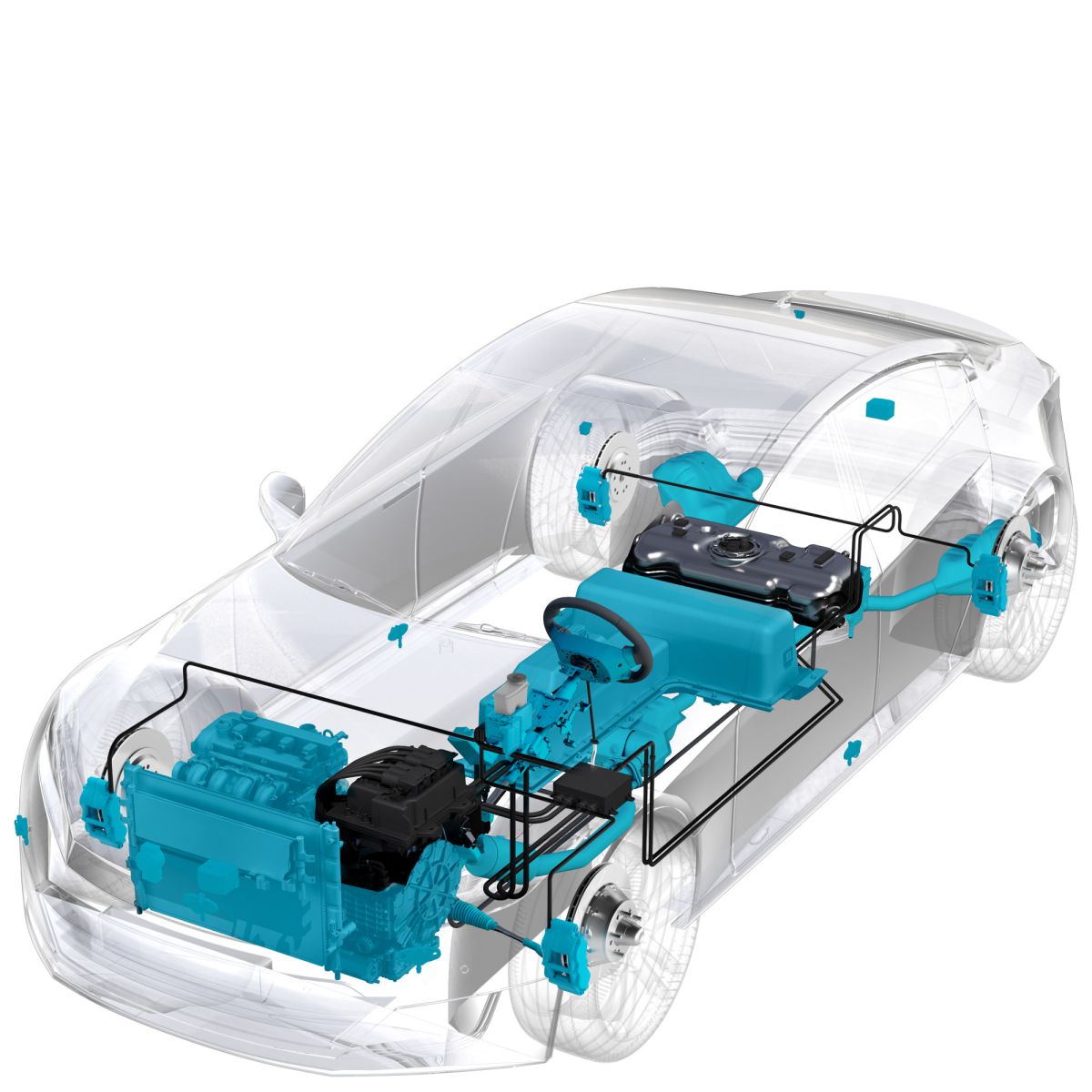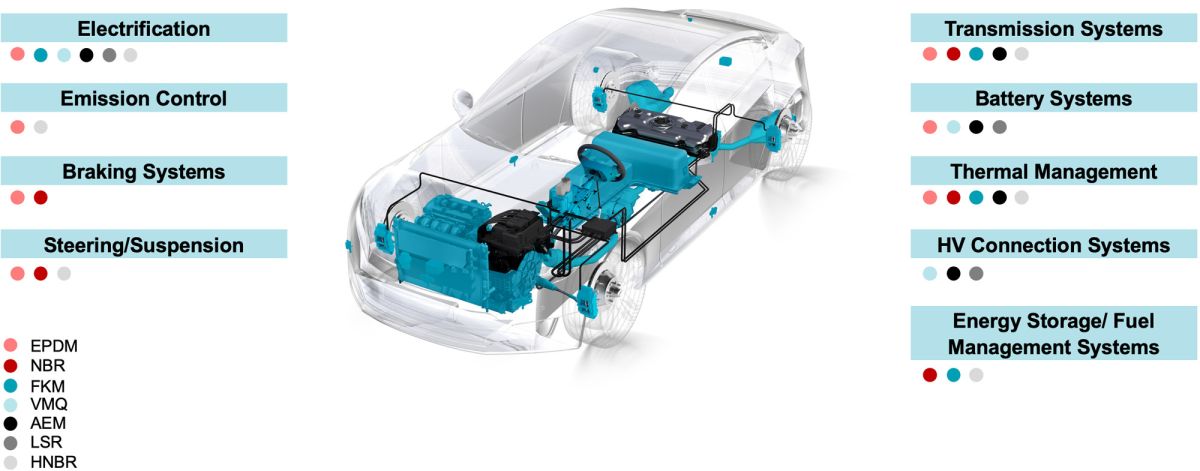
One of them is the requirement for low temperature and durability from a material perspective that must be addressed when developing O-rings for new mobility. Abrasion optimized materials are required for technologies focusing on multiple tasks and also for different types of fluids in direct contact with the seal. There is also a demand for more robust compounds, more precision design and reduced tolerances to support lightweighting efforts. This means, new materials need to be developed to ensure seal integrity, operational performance and, critically, safety.
O-rings will continue to have an important role to play in a wide variety of system critical applications. For example, sensor applications as vehicles become more autonomous, electrified systems such as brake by wire technology and the electric parking brake (EPB) – all of which require O-rings to function correctly. The biggest advantage of having Datwyler as a co-engineering partner is that we can cover every step to secure the supply chain. We are involved across the board, with in-house experts in engineering, simulation, material and post-treatment – combined with global coverage. As such, we have the technical expertise and understanding of where the O-ring enters the equation and exactly what is required.
Datwyler’s O-rings can be used in various applications and different powertrains.



Materials development and surface technologies
The formulation of rubber is as important as the mixing process itself and we can tune and control all of the parameters involved in the process – temperature, time and energy consumption. Another aspect we offer is a focus on the analytics of rubber. Rubber testing goes as a given in the industry but often it is tested via sheets in a laboratory. We have a testing technology that can check how our rubbers behave in actual applications. The aim is to deliver the best solution in the shortest time possible.
Our compounding is also a value added element. We need to mix the right ingredients in the right way to deliver the desired performance. That is why we have a continuous focus on the development of the compound as well as the mixing process to meet the best properties of the final part.

Surface technologies are also vitally important. Some parts may require special abrasion resistance, while others may need to be self-lubricating to aid with the mounting process. We fulfil all of these requirements by special surface treatments or coatings based on our internal know-how.
Whatever technological advances present themselves in the move to electrification, O-rings will certainly be a standard requirement in the component toolkit. However, as parameters change, the composition and functionality of those O-rings will become ever more complex.


